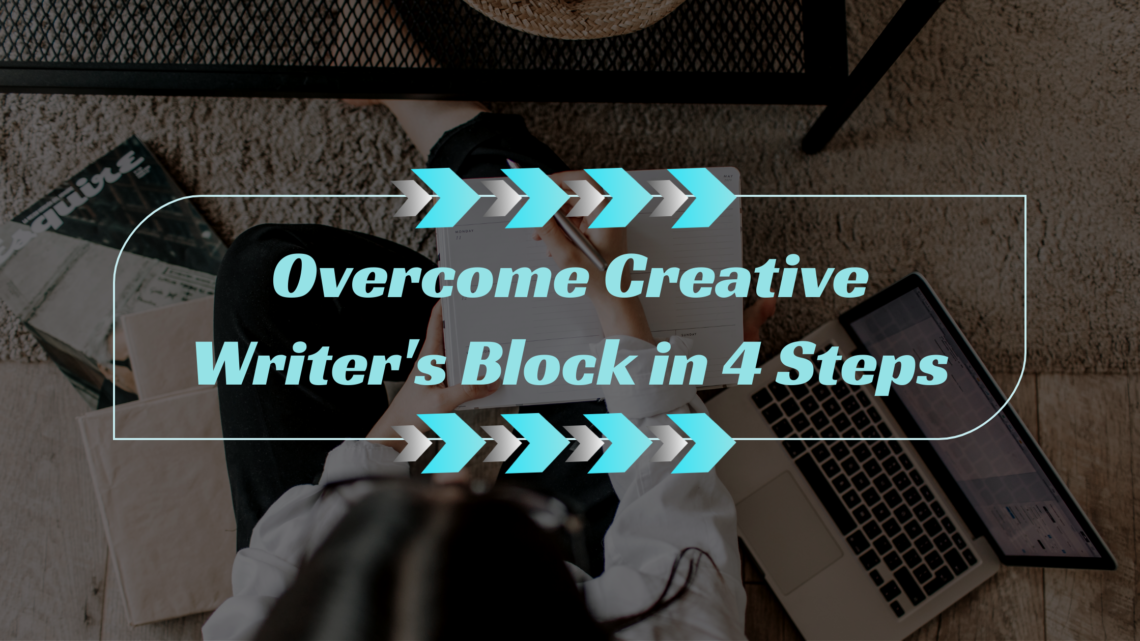
Overcome Creative Writer’s Block in 4 Steps
We’ve been there. Writers’ block is one of the worst things that can happen to an aspiring author. It’s hard not to feel stuck on a project when you don’t know what to write next, but luckily for you, we’re here with some tips that will help you get over your writers’ block! So check out these ten ways below and see if any of them work for you!
We’ve found that two of the leading causes of writer’s block are the feeling of being overwhelmed or feeling that you are lacking creativity. However, you can overcome these two obstacles by breaking your writing into small, bite-sized parts. Let’s look at some of the areas you can focus on first to break through that writer’s block.
Step 1: Read Books in the Same Genre as Yours
If you’re having a hard time with creative writing, it may be time to search for inspiration. One way to find inspiration is to read books in the same genre as yours. This will help you better understand what makes a good book in your genre and can help you come up with new ideas. If you’re strapped for time, try watching a movie in your same genre instead.

Step 2: Focus on Your Characters
Now that those creative juices are somewhat flowing, what do you know about the characters in your story? Don’t worry; we’re not asking for their favorite color or what they like to eat for breakfast. Instead, we want to know who these people really are and what drives them: their motivations, goals, fears, and dreams. This is called a character bio, and creating one can help you develop a deeper understanding of your protagonist or antagonist so that when the time comes to write dialogue or create scenes, it will be much easier.
When writing your character bios, if you want your readers to suspend disbelief and become fully invested in your story, you need to make sure your fictional characters are believable. This means creating characters who are three-dimensional, with real motivations and flaws. It also means giving them enough backstory to make them come alive on the page.
You can also make your characters more believable by ensuring that they act realistically in the situations you put them in. For example, a normally levelheaded character may panic under pressure, while a hot-headed character may suddenly become rational in a crisis. By staying true to your characters’ personalities, you’ll create a more believable story world for your readers.

Step 3: Make Sure Your Plot Has Enough Action
Now that you know who your characters are, take this time to plan out your story’s action scenes. It’s important to include enough action in your plot because it helps keep your readers engaged. If your story is too slow-paced, the reader may lose interest and stop reading. On the other hand, it may be hard for your readers to keep up if your plot is full of nonstop action. That’s why it’s essential to find the right balance so that your readers are constantly engaged and excited to find out what happens next.

Step 4: Create an Outline for your Book
Now that you have the fundamentals, a surefire way to banish writer’s block is to create an outline for your book. An outline can help you stay focused on your story and plan and organize your thoughts. Of course, you won’t have to stick to the outline once you’ve created it, but it’s a great starting point. The outline can be changed and adapted to fit your story as it progresses. For more information, you can read our article on how to outline your book.
We hope you enjoyed reading this blog post! Do you have any tips to share on overcoming writer’s block? Have any of the suggestions we mentioned worked well for you? Please let us know in the comments below.




